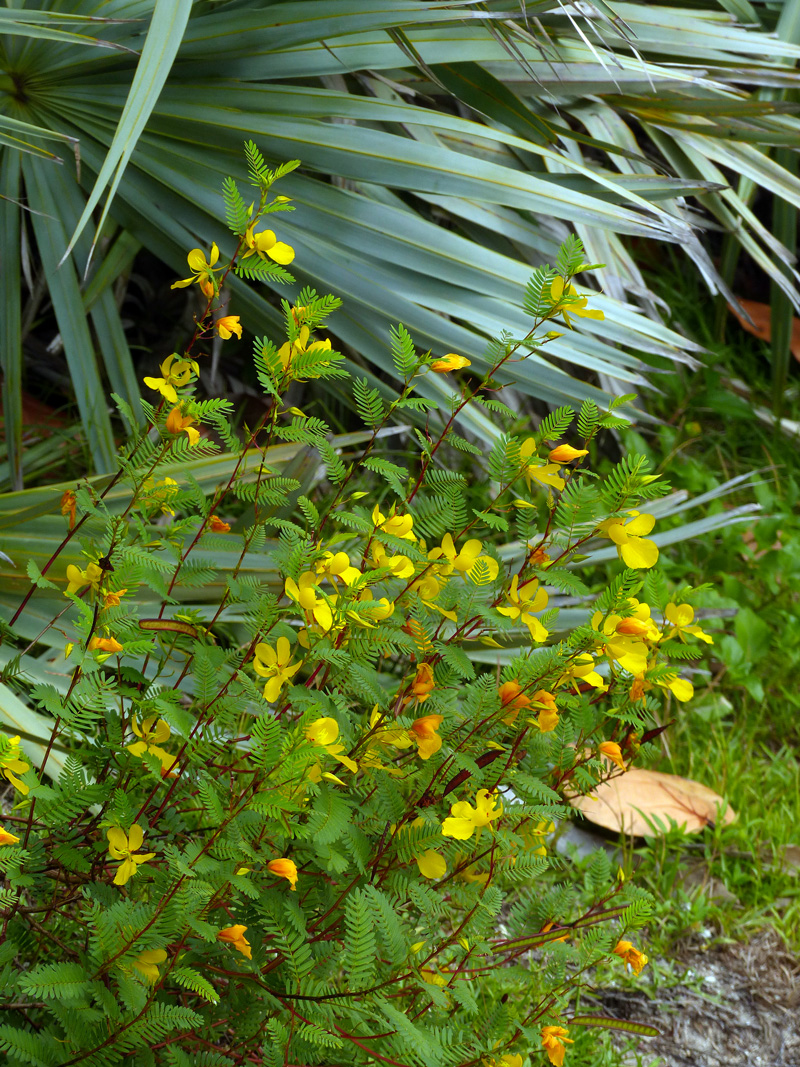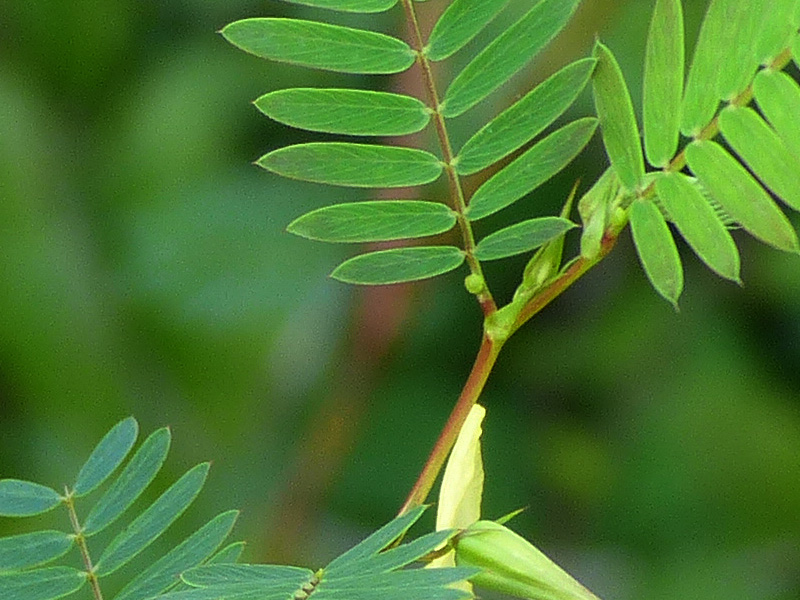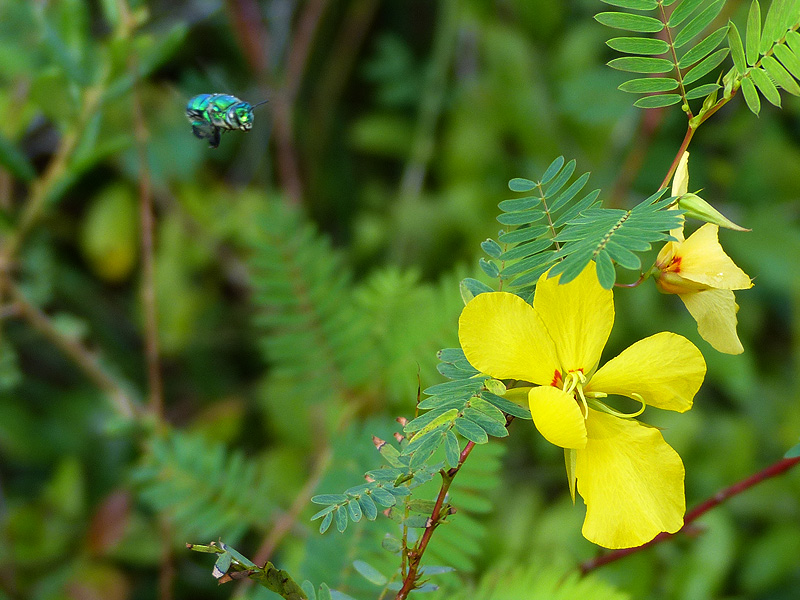
Partridge pea (Chamaecrista fasciculata) is full of flowers along Oslo Road, at the Oslo Riverfront Conservation Area, at Treasure Shores Park (where the pictures above was taken), and throughout Indian River County mostly in sunny, dry places. Supposedly, European explorers called this wildflower partridge because they mistook the quail that they saw eating its seeds to be partridges.
This widely distributed plants ranges throughout much the eastern U.S. from Rhode Island to Minnesota to New Mexico to Florida. In Florida, this native annual “volunteers” in areas that have been disturbed and is very variable in size and shape – sometimes shrubby and sometimes prostrate.

Partridge pea flowers themselves do not produce nectar but have extrafloral nectaries that offer nectar rewards likely to attract ants to help to defend the plants from insect herbivores. Ceraunus blue (Hemiargus ceraunus), cloudless sulphur (Phoebis sennae), little yellow (Eurema lisa), orange sulphur (Colias eurytheme), sleepy orange (Abaeis nicippe), and gray hairstreak (Strymon melinus) butterflies use partridge pea as a larval host plant.

The extrafloral nectaries are located below the leaflets on the leafstem (rachis). Note the tiny round structure which contains nectar.
Partridge pea flowers contain lots of pollen to attract bees. Native bees emerge from partridge pea flowers with far more pollen on them than European honeybees (Apis mellifera) do. UF researchers have discovered that buzz pollination by bumblebees (Bombus sp.) is not required: “Likely pollinators of partridge pea in Florida are larger bees such as Xylocopa and Bombus and possibly Agapostemon splendens, a smaller halictid bee”. For more details, visit the 2018 scientific paper from the UF Department of Entomology and Nematology, Bee contribution to Partridge Pea Pollination in Florida.

Pictured above is a metallic green sweat bee, likely Agapostemon splendens, approaching a partirdge pea flower. The red markings in the center of the flower are said to guide bees to the pollen.
